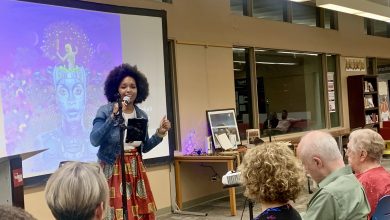October is American Archives Month!
To kick off American Archives Month, university archivist Erin Mahaney has written three blog posts discussing archives, preservation, and the challenges of preserving our past.
by Erin Mahaney
Many archivists and other cultural heritage professionals are, by the nature of their profession, preservationists. Archivists are charged to collect, protect, preserve, and make available records of enduring or intrinsic value to the public. Slight differences exist among terms such as archival value, permanent value, enduring value, and intrinsic value, but for the purposes of this post, think about records in the context of intrinsic value and enduring value. In this context, both the message (content) and medium (form) have value that merits long-term preservation. This issue of medium, or form, changes when we begin to deal with digital records, and different priorities regarding authenticity come into play. Numerous challenges will face anyone, cultural heritage professional or not, who seeks to preserve records. Records come in countless formats, from paper to PDF to film reel and so much more. While the first task is to identify what to save, we must then try to actually preserve the materials when the natural world dictates that these things should, like everything else, eventually decompose. Without going into the theory or analysis of why we (individuals, not just archivists) choose to save what we do, or the potential implications of these choices on how humanity understands its own history hundreds of years from now (this is only a blog post, after all), it’s worth looking at some of the challenges facing the preservation of the physical and digital records we seek to maintain.
Physical Challenges
There are individuals who really love preservation. They love the nearly impossible (some would argue actually impossible) challenge of trying to slow deterioration, to preserve both the medium and the message of archival records- indefinitely. While the challenges and approaches to preservation are different for physical and digital media, these challenges are eagerly met by a field of devoted (sometimes slightly paranoid) individuals who look askance at an open coffee cup near an exhibit, watch the checksums (or the programs running them), constantly monitor the hygrometers or data loggers, and inspect or sniff old books for mold and decay.*
Being preservation-minded can result in certain behaviors, in and out of the workplace. Knowing mold can grow in library and archival collections within 48 hours if the conditions are right (high temperature and humidity) means that we compulsively monitor the environmental conditions of our storage areas to be sure they stay within the optimal range (50-68˚F and 35-55% RH, depending on the types of materials). We often exhibit similar behaviors in our home environments, such as discreetly hiding hygrometers in our book shelves, performing regular mold checks of our collections, and refusing to store certain types of materials in a garage or shed. We are very aware that maintaining good, stable environmental conditions are the single most important thing we can do to preserve our physical collections. Fluctuations in the environmental conditions are also cause for concern. Paper in particular will absorb moisture in high humidity, expand in heat, contract in cold, and become brittle when too dry. These small adjustments the materials make to their environment stresses and weakens them. In addition to heat and moisture, there is light. The effects of light are cumulative and irreversible on most archival and museum materials such as textiles, photographs, paper, and film. We cannot undo the damage caused by light simply by placing it somewhere in the dark for twice as long. Small things like oils on our hands when we touch the emulsion of a photograph, dust particles that can scratch a fragile surface, or air pollutants that settle on these items all haunt the preservationist. The first thing we look for when we enter a new building isn’t the fire escape but to see if the windows have UV filters and if anything valuable is located below a set of water pipes.
*Note- it is not recommended to sniff for mold. In fact, it is very bad indeed, and rumors of an occupational hazard called “The Archivist’s Lung” resulting partly from such unwise evaluation methods should deter the habitual book-sniffer.





